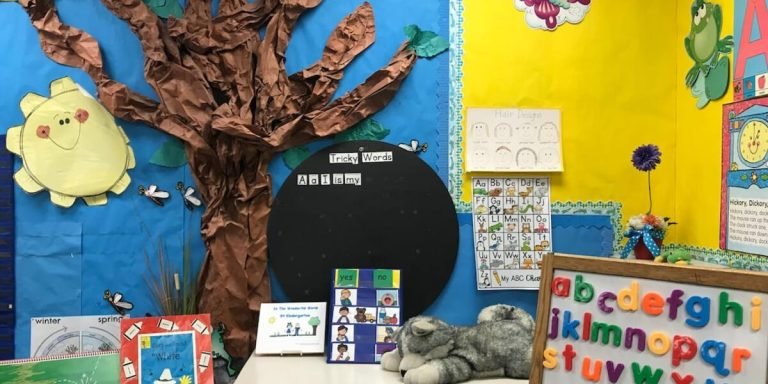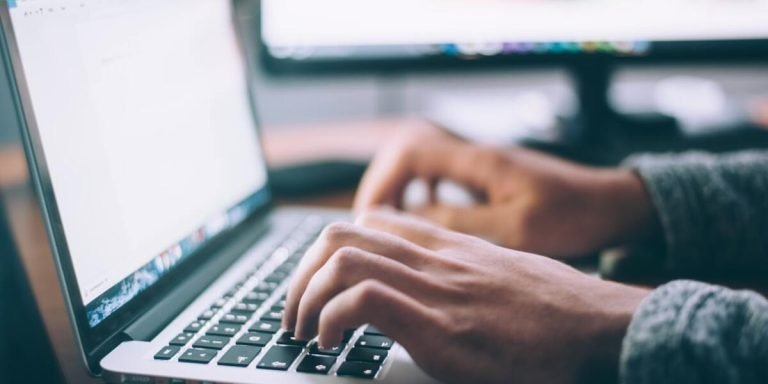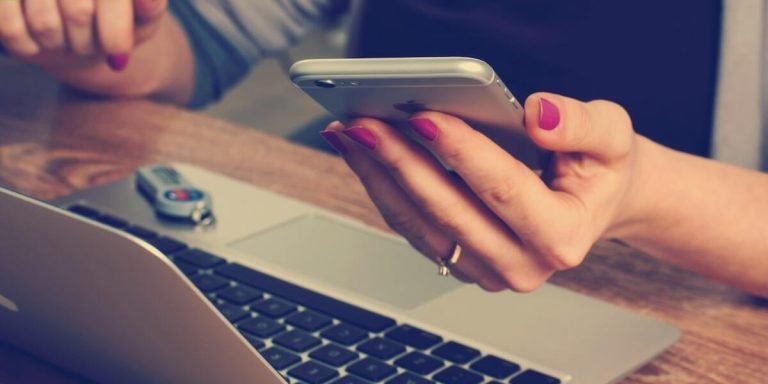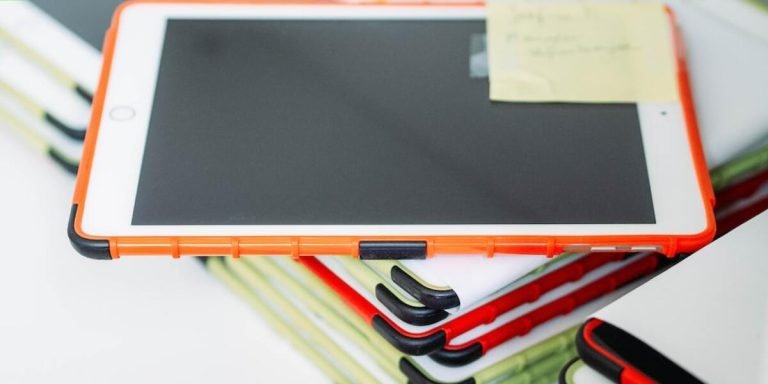Mlearning: Transforming the Landscape of Childhood Education
In the ever-evolving world of technology, one term that is gaining rapid momentum in childhood education is “mlearning” or mobile learning. This concept not just leverages modern technologies but also transforms conventional classroom environment into a dynamic learning space.
Mlearning marks a significant stride towards integrating technology in education by offering accessibility and convenience to learners around the globe. As we dive deeper into its impact on childhood education, it becomes clear that mlearning brings forth innovative strategies to enhance every child’s educational experience while breaking down geographical barriers.
Did you know?
Despite much focus on the digital divide, an interesting fact is that 95% of US children aged between 3 and 18 have access to a smartphone at home. This shows huge potential for Mlearning (mobile learning) in transforming childhood education nationwide.
Understanding mLearning: The Future of Educational Technology
With the rapid advancement in technology and its integration with education, mLearning or mobile learning has introduced an innovative approach to transferring knowledge. The future of educational technology is now at our fingertips through various digital devices including smartphones, tablets, laptops among others. This form of learning not only provides flexibility but also opens doorways for personalized studying methods that can cater to individual needs.
mLearning makes education more accessible than ever before by breaking down geographical barriers. No longer are children confined within classroom walls; they can learn from anywhere at any time while utilizing interactive applications which make lessons engaging and fun-filled experiences rather than monotonous tasks. It fosters a sense of responsibility as it empowers learners with control over their own academic progress.
Moreover, this tech-driven method offers extensive resources where information on almost every subject under the sun is available online. These tools aid in developing internet research skills which will be invaluable throughout students’ lives considering we live in an increasingly digital era – 2023 being no exception! Through features such as quizzes and discussions forums integrated into these platforms provide real-time feedback enabling immediate correction thereby reinforcing understanding leading towards better grades overall.
Defining mLearning and Its Scope in Modern Education
mLearning or mobile learning is an approach to teaching and learning that capitalizes on the unique capabilities of mobile devices, including smartphones, iPads, laptops and more. It has revolutionized education in a myriad ways by providing increased accessibility for learners anywhere at any time.
So what does mLearning offer? The cornerstone of mLearning lies within its flexibility and convenience. Unlike traditional classroom settings bound with tight schedules, geographical constraints or lack of resources; students using mLearning can access educational materials on-demand wherever they are.
Moreover, it’s not just about accessing information but also interacting with it through various functionalities such as video playback tools, quizzes annotation apps among others. Thereby aiding students to better grasp complex concepts which once seemed too formidable.
Further highlighting the scope of mlearning in modern education include personalized student-led curriculums where each learner can pave their own path based on individual strengths and weaknesses – something unheard off within stringent old school methodologies thereby making this a very engaging mode for both educators and learners alike.
Indeed integrating technology like M-Learning raises bar 21st-century skills focusing largely developing critical thinking problem-solving abilities encouraging creativity innovation while arming new age generation all necessary competencies tackle future challenges head-on!
Comparing Traditional Learning Methods with Mobile Learning
Mobile learning, or mLearning as it is often referred to, has emerged as a transformative force in the education industry. As we compare traditional learning methods with mobile learning, one thing becomes clear: technology integration in education holds exciting promise for improving student outcomes.
Traditional educational practices often revolve around structured classroom environments where students listen and learn from an educator’s teachings. The main tools here are textbooks and exercises that test knowledge acquisition primarily by memorization based tasks. While these methods have stood the test of time, they pose limitations when viewed through modern pedagogical lens.
Contrastingly, mLearning introduces new dynamics into teaching methodologies. It hinges on using digital applications accessible via smartphones and tablets that offer differentiated instruction tailored specifically to individual learner requirements.
The transition from blackboards to interactive screens intentionally moves away from rote-learning techniques towards more engaging strategies such as game-based assignments or multimedia presentations which stimulate critical thinking skills – something lacking in traditional settings.
Moreover, it equips learners with 21st Century competencies like active self-directed exploration rather than being passive recipients of information thereby nurturing problem-solving abilities integral for future readiness.
mLearning platforms also erase geographical confines associating round-the-clock access enabling anywhere-anytime flexible study options compatible even amidst pandemic induced online schooling scenarios! Plus accessibility features built into apps catered towards visually-impaired seeing impaired users enhances inclusivity within classrooms truly embodying ‘Education For All’ philosophy!
Harnessing the Power of Mobile Devices for Enhanced Classroom Experiences
The influence of mobile devices has seeped into every aspect of our lives, and the classroom is no exception. Coined as “mLearning”, this term denotes an innovative way in which both teachers and students can leverage technology to enrich the educational experience. In 2023, we are witnessing a steady shift within education systems worldwide; ditching traditional teaching paradigms for those that integrate user-friendly handheld gadgets.
Mobile learning or mLearning is not about replacing conventional methods but augmenting them with engaging digital content. It’s about having textbooks on smartphones or tablets instead of heavy backpacks filled entirely with hardcovers, thereby making it convenient for learners across various age groups. By harnessing these potent tools effectively, educators can offer interactive experiences unlike any other – from virtual biology labs to geography lessons using augmented reality maps.
Additionally, integrating mobile devices within pedagogy also fosters self-paced learning among pupils — allowing them track their personal progress while taking notes digitally during class discussions or revisiting materials anytime at home comfortably via e-books. Ultimately mlearning gives you access to information from anywhere at any time thus enabling educators create enriched environments where children find joy in exploring new concepts each day.
Strategies for Implementing BYOD (Bring Your Own Device) in Schools
Implementing the Bring Your Own Device (BYOD) strategy in schools can be a game-changer to enhance classroom experiences. With pupils already familiar with mobile devices, mlearning technologies have emerged as valuable tools for teachers and parents alike.
Firstly, clear guidelines need to be established about which types of devices are acceptable under this policy and how they should be used efficiently. This involves creating an accepting environment where all forms of technology- smartphones, tablets or laptops- find their place in the learning space.
Secondly, teaching digital citizenship is essential when inviting students to bring their gadgets into classrooms It promotes safe internet use along with responsible online behavior ensuring that children understand cyber ethics aspects like privacy rights and recognizing fake news.
Third on our list comes teacher training. Just having tech-savvy kids isn’t enough; we also need trained educators who can leverage these resources optimally.Educators must ensure they’re updated with technological advancements,major platforms,and softwares for seamless integration of technology in education.
Leveraging Educational Apps to Facilitate Interactive Learning
In the modern technologically advanced landscape, leveraging educational apps to facilitate interactive learning forms a crucial part of mlearning. The seamless integration of technology in education can tremendously enhance classroom experiences by offering a hands-on approach and making education more relatable for youngsters.
Educational apps have been ingeniously designed to empower students with more autonomy over their learning process. These tools make complex concepts easier and fun-filled through attractive visuals and engaging activities, thereby simplifying abstract theories into comprehensible content that kids can resonate with better.
Integration of applications such as virtual laboratories allows pupils to carry out experiments without any physical constraints or safety issues. In contrast, language-learning platforms offer extensive audio-visual aids helping children grasp new languages quicker than traditional methods might allow.
Collaborative project work is another fantastic feature promoted by many educational apps today; students bond over shared tasks from different locations leading not only improved understanding but also enhancing team skills – an essential asset in this era’s global community setting.
Measuring the Impact of mLearning on Student Performance and Engagement
With the advent of technology, traditional teaching methods are rapidly evolving. mLearning or mobile learning has emerged as one significant aspect of this change. It refers to a process where students can learn anytime and anywhere with the aid of their handheld devices.
These digital tools have opened new avenues for teachers to make lessons more engaging, interactive, and personalized.
A multitude of research data indicates that mLearning effectively enhances student performance and engagement level in 2023’s modern educational scenario. The convenience it provides by allowing accessibility from virtually any location paves the way for self-paced learning which perfectly serves diverse aptitudes amongst learners.
Additionally, real-time feedback mechanisms incorporated into these platforms not only increase interactivity but also keep track of individual progress meticulously aiding educators in assessing understanding gaps accurately than ever before thus directly impacting learner outcomes positively.
Enhancing students’ technological literacy is another beneficial byproduct offered by mLearning implementation as they navigate through different applications while learning subject matter contributing towards building necessary skills fitting well within our increasingly digitized society.
Integrating technology like mLearning revolutionizes education standards globally. It increases seamless collaboration among peers, thanks to the collaborative features of many apps. As a result, courses become enjoyable rather than monotonous chores, driving participation rates upwards. The integration of technology also increases student willingness and significantly boosts performance. These quantifiable factors successfully measure its impact and recognize its potential beyond a simple tool for facilitating delivery mediums today.
Analyzing Data-Driven Results from mLearning Initiatives
mLearning, although a relatively new concept in the world of education, has proven to be revolutionary. It’s pushed boundaries previously limited by traditional learning methods and opened doors for enhanced student performance and engagement.
The power of mLearning doesn’t stop at delivering lessons on digital platforms; it also provides valuable data that can help educators understand their students better. Let’s consider how we can analyze this data-driven results from mLearning initiatives.
Firstly, measuring student performances becomes an easier task with mLearning tools as most are built-in with analytics able to track a learner’s progress over time. By utilizing these features effectively, you gain access not just grades but detailed view into each child’s strengths and weaknesses across various educational parameters such as speed of comprehension or problem-solving abilities.
Case Studies: Success Stories of Technology Integration in Classrooms
When we delve into the realm of mLearning, numerous success stories emerge that testify to its profound impact on childhood education. Here are a few notable instances where technology integration in classrooms led not only to higher student performance but also boosted engagement.
Our first case study brings us to an urban school district grappling with low academic scores. The introduction of mLearning solutions showed a substantial improvement within just one term! A blend of gamified learning and regular e-quizzes saw students actively participating and better performing in assessments – proof positive that technology can elevate traditional teaching methods when implemented mindfully.
Next up, let’s talk about a rural primary school previously faced with high absenteeism rates due to lackadaisical attitudes toward academics among pupils. However, integrating various interactive educational apps into their curriculum sparked renewed interest. Students were more eager than ever before in attending classes as they anticipated what fun yet informative modules awaited them!
Onto our third example which draws attention towards special needs children who often struggle with conventional instructional approaches. Through customizable mLearning programs tailored specifically for different abilities and skills levels, these kids witnessed remarkable progress both acadically and cognitively speaking.
Lastly is the instance about advanced learners or gifted students who felt unchallenged by mainstream coursework consequently exhibiting signs of boredom or indifference at times . Thanks once again goes out there for modern Tech Advancement through Mlearning providing opportunities beyond textbooks even engaging those aforementioned group too .
Conclusion
In essence, mLearning has redesigned the map of childhood education, creating a dynamic and interactive experience for learners. It is revolutionizing classroom environments to engage children in meaningful learning experiences that are fun and adaptable to their pace.
So why not surf this digital wave? Explore our website further to discover more innovative educational solutions tailored specifically for your child’s development. For enlightening resources on educating youngsters or seeking support as an educator or parent, feel free to navigate around – we’re here with you every step of the way!







